$81m for a content business: How good is Reforge at product strategy?
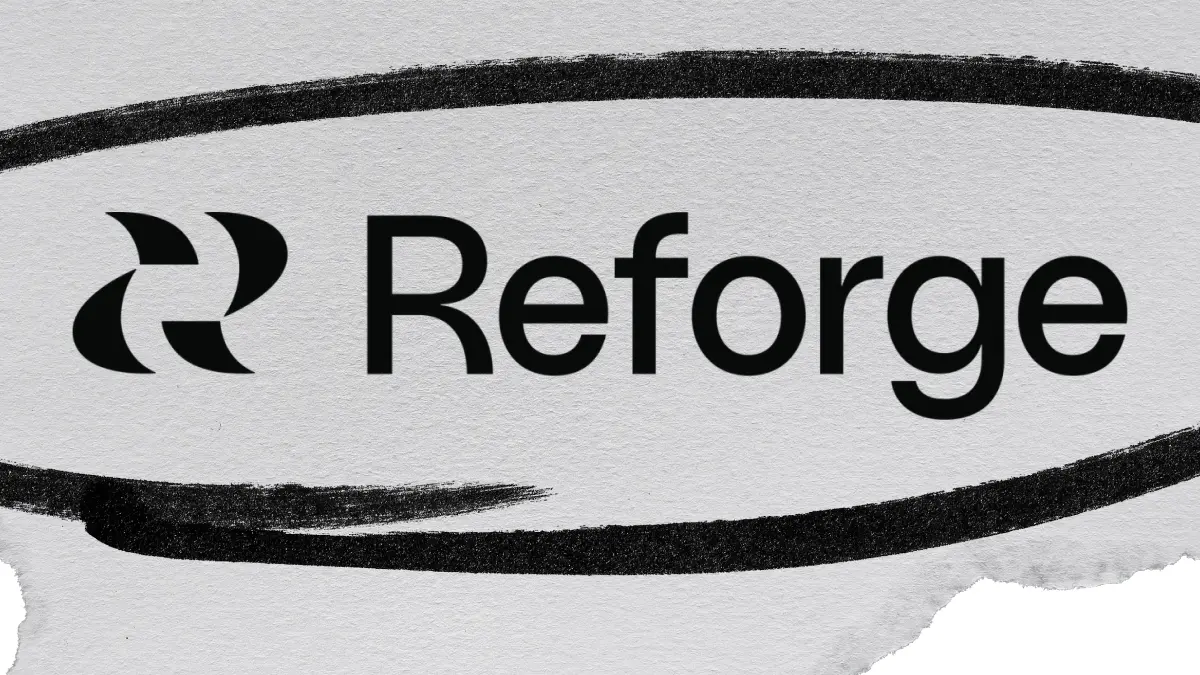
I expected to use my Reforge membership mainly for networking. I’ve taken too many online courses and read too many how-to books to get impressed by content. Reforge was different: I was surprised by the depth and have rarely had so many insights while taking a course.
With that level of quality, I’m not surprised that Reforge made tens of millions in revenue with a team of 20 and no outside capital. I was surprised when they raised $21m. And another $60m a year later.
You usually raise money to enter and win a market. But Reforge had already won: They were known as the premier education platform for product/growth professionals.
Founder/CEO Brian Balfour could have been satisfied: Pay himself a high salary, top it up with dividends, eventually take an acquisition offer and ride off into the sunset. Reforge did the opposite.
An online course business doesn’t need that. Except when it isn’t an online course business. Over the past years, Reforge has started to apply their own growth/product teachings to itself.
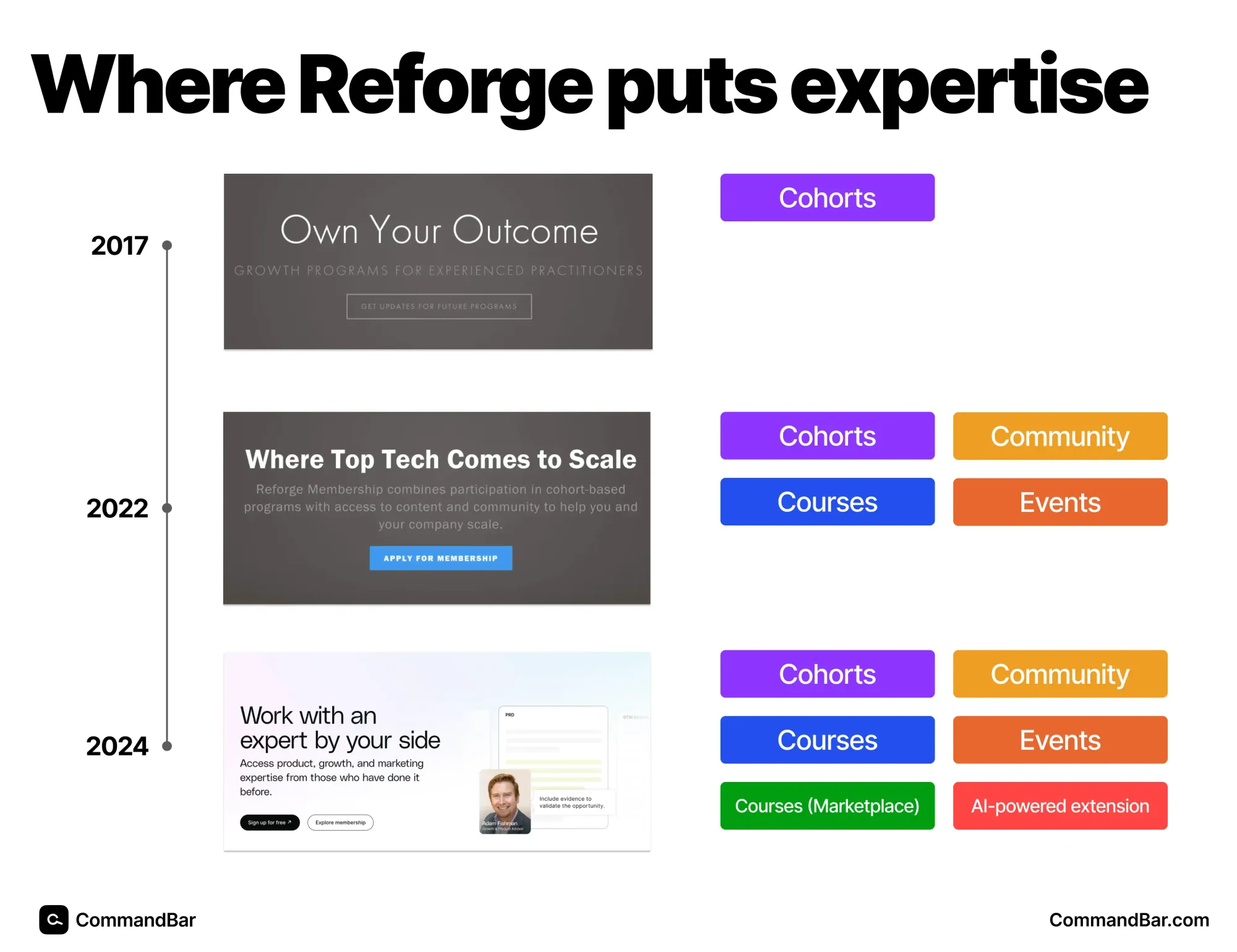
Origins
“Today, we’re happy to announce the second run of our lecture series on growth/marketing/metrics, through our publishing collaboration called the Silicon Valley Business Review.”
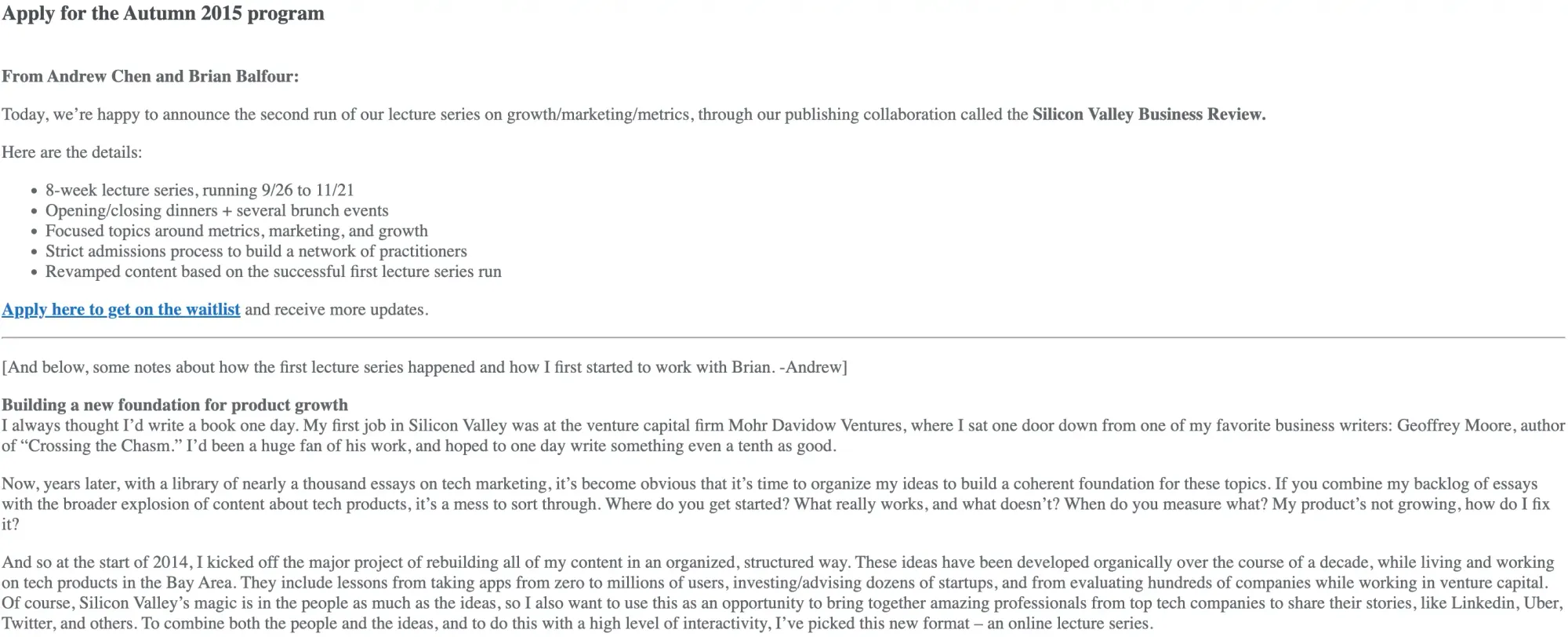
Reads the website of the defunct program that spawned Reforge. The wordy name “lecture series on growth/marketing/metrics” has now become the Growth Series, but it remains Reforge’s flagship course.
The series was first held in San Francisco in 2015, but it already carried the markings of Reforge:
- Exclusivity: Reforge isn’t for anyone. For most of its life, you had to apply to buy Reforge (this has recently changed).
- High-level practitioners: While many online courses are taught by dilettantes who read the top 3 books on a topic, Reforge teachers are all high-performing practitioners.
- Expensive: Today, Reforge membership costs $1,995 a year. Previously, individual courses sold for $3,500.
These choices seem obvious now, but the mid-2010s were the heyday of massive open online courses (MOOCs): Open to anyone, cheap, and available online wherever, whenever.
This counter-position to Udemy and its ilk worked. Brian Balfour soon quit his VP of Growth job at Hubspot to found Reforge. Here's what its original landing page looked like:

Other courses followed, each following the recipe of being cohort-based, expensive, exclusive and taught by the best at their craft. Topics remained focused on growth/product professionals: With titles like the “retention & engagement deep dive”, Reforge made clear they weren’t widening their reach.
As simple as it sounds, that’s how Brian and a team of about 20 bootstrapped to tens of millions in revenue in 5 years. That’s because Reforge solved one of the hardest problems in professional training/education: Finding great instructors with specific knowledge.
High-priced courses are a fantastic model to build a cash-flowing business that doesn’t scale at all.
It’s great when people pay you $3500 for a course. Trust in their quality has always been Reforge’s core advantage. And with limited top-level professionals, you can’t churn out more courses.
That’s why Reforge is on a mission to increase revenue by becoming more scalable.
From one-off to subscription
Recurring revenue is the holy grail of startup finance. That’s why SaaS is the go-to business model for founders. So when Reforge raised money, they couldn’t resist the draw of recurring revenue any longer.
After the funding round, Reforge became a membership.
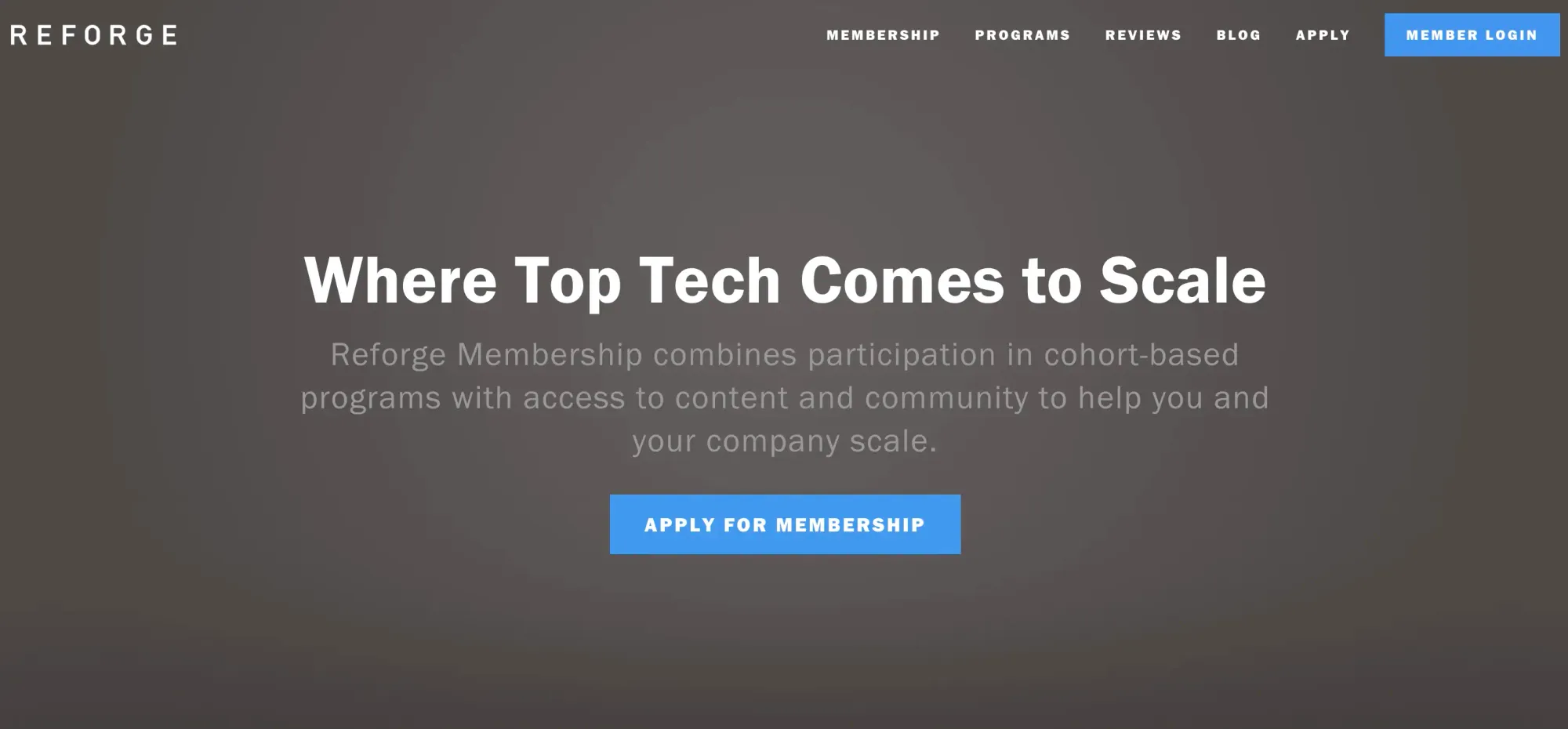
Instead of paying once for a cohort-based course, members now pay yearly for access to the full catalogue (plus one cohort).
Balfour has said that this supercharged Reforge’s Growth, but caused the typical problems of a sudden growth spurt: Reforge lacked the resources to support all of its new customers, which led to bad retention.
But recurring revenue was only the first step to a better business model. Reforge’s next move made it more scalable:
Reforge marketplace
For most of its life, Reforge offered its courses directly. They produced a course and sold it.
This is changing. Reforge now operates a marketplace that lists courses from outside instructors at different prices. Reforge presumably charges a commission, not the entire tuition.
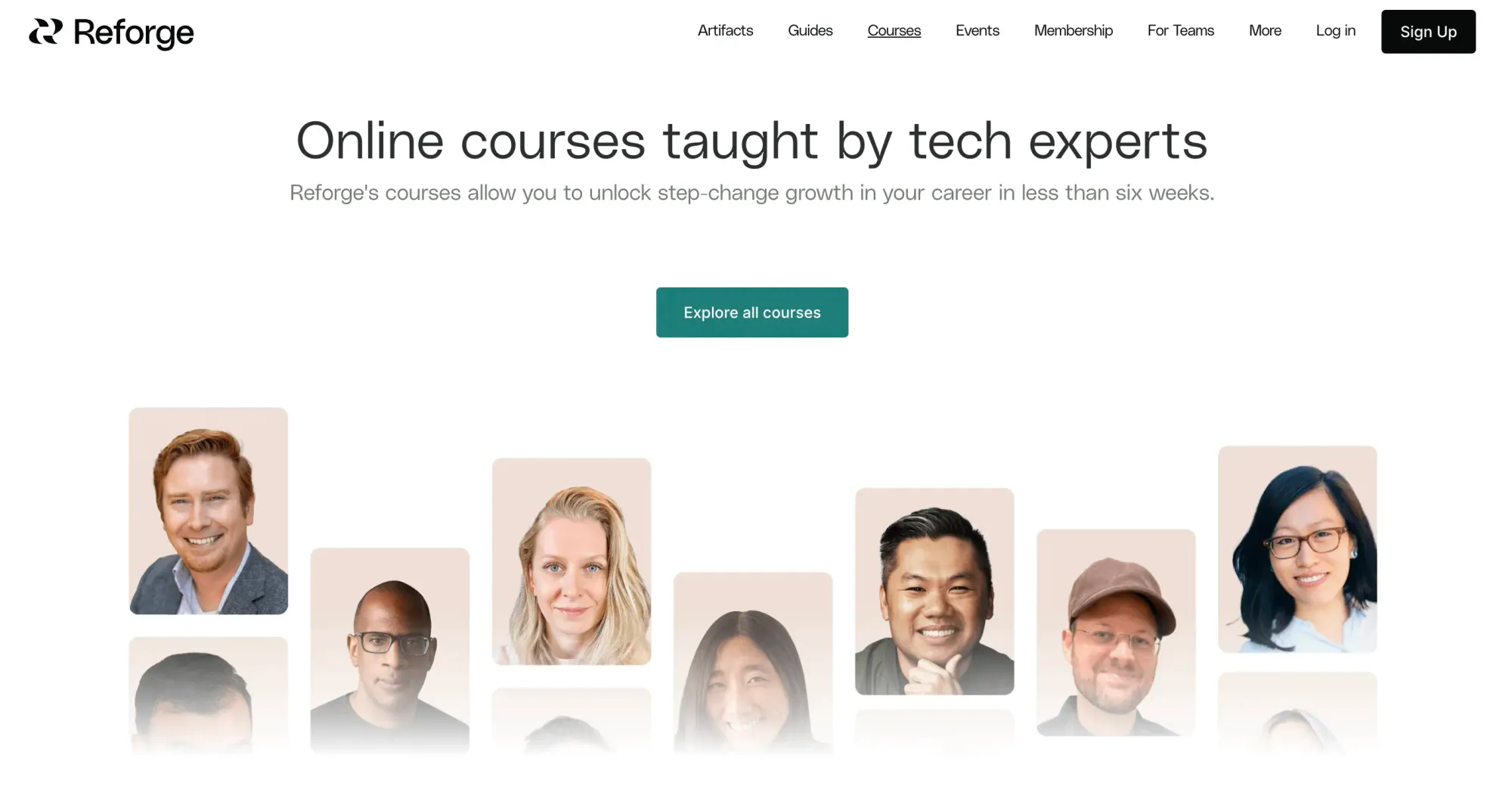
But Reforge’s marketplace isn’t Udemy, where anyone can upload a course. Reforge is what’s called a managed marketplace: The Reforge team verifies any course that goes on sale, but it doesn’t dictate how those courses are run.
This is similar to the difference between Craigslist and a vintage boutique. Everything you see has been approved. That way, Reforge maintains its brand trust without running every course itself.
It makes Reforge more scalable but also improves the entry points into Reforge: All courses I’ve seen are cheaper than the full membership. They’re easier entry points and full memberships, which makes buyers ideal targets for an upsell to the membership.
The reverse is also true: Existing members can buy the cohort-based courses on the marketplace, which offers a way for Reforge to increase LTV on members.
Reforge’s core asset—brand trust—also reinforces itself here. If I buy a great course, I’m more likely to trust Reforge to offer a great membership. And if I enjoy the on-demand courses, I’m more likely to trust Reforge also offers great cohorts.
Reforge Artifacts
Reforge’s material starts at the foundations, which makes it abstract. But so often, we want to see how someone actually did something. That’s why Reforge launched a free offering: Reforge Artifacts is a collection of highly specific work artifacts—documents, diagrams, spreadsheets and more—that leaders in great companies have actually used.
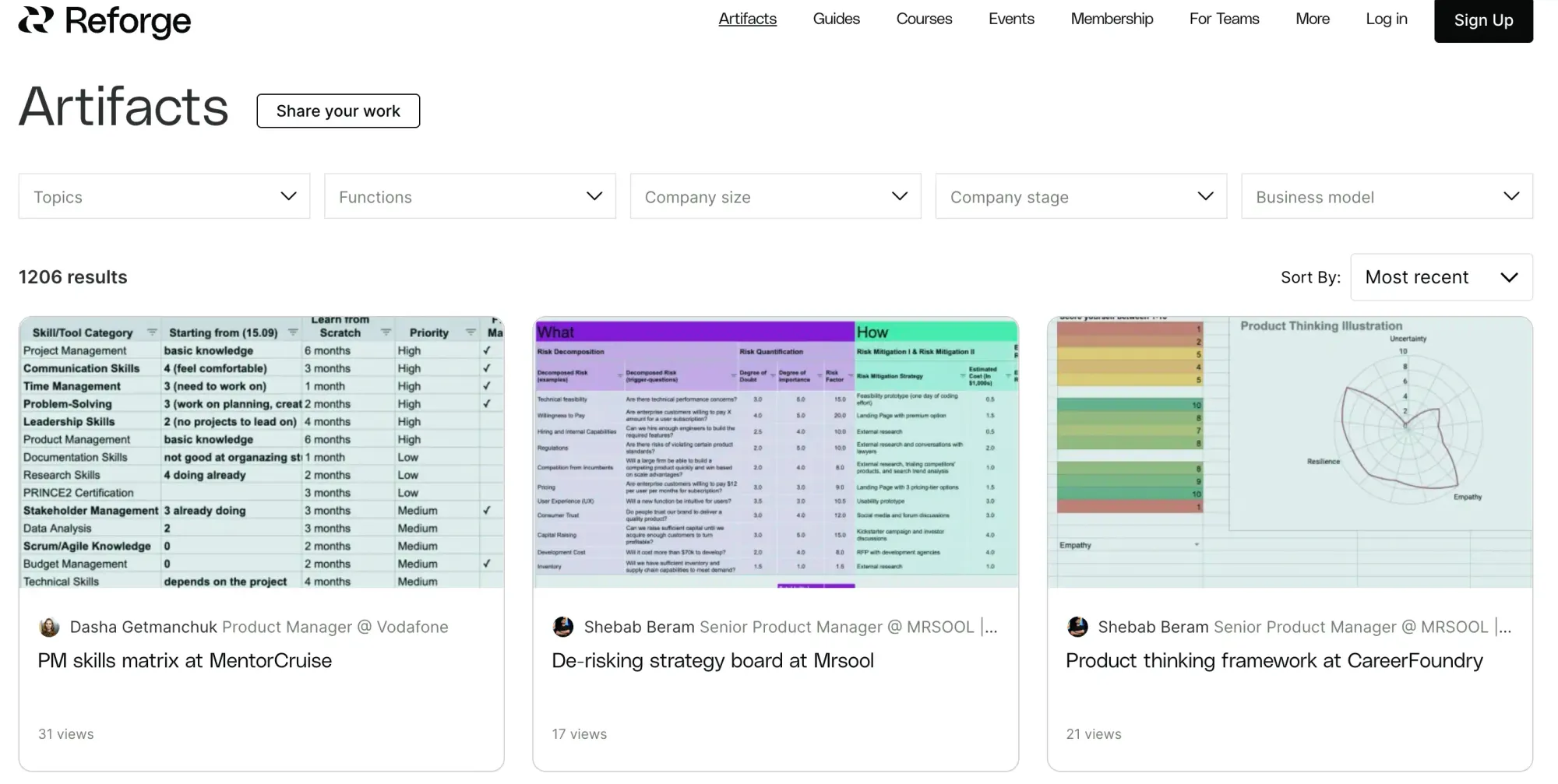
With this, Reforge again makes materials available that you can’t find elsewhere. It also accelerates growth for Reforge (without them needing to create content):
- Reforge’s brand is strong, which means people/companies want to be associated with it. So they upload artifacts. (We’ve done this)
- Because Reforge is a trusted destination, people go there.
This creates a growth loop: People upload an artifact and send Reforge some traffic by sharing it. Some of those people upload an artifact, which sends Reforge more traffic yet again, which improves the overall Artifacts experience.
As this loop accelerates, some percentage of users will sign up to Reforge and some percentage of that will pay. This is important because it’s hard to get top-of-funnel interest for high-priced products like Reforge.
But Reforge is done being “just” a content business.
Reforge Chrome Extension
Frameworks are useful later, but you often want a helping hand now.
The help we need day-to-day is usually about specific tasks. Reforge knows this—and has built an AI-powered Chrome extension that sits in Notion, Google Docs, and a few other tools.
Like AI support tools, it’s trained on Reforge’s content and ingests your document to give specific feedback on it.
The metaphor is well-worn, but it feels like a copilot for someone working in product or growth: This article isn’t exactly the intended use case for this product, but it’s a way to show off the extension:
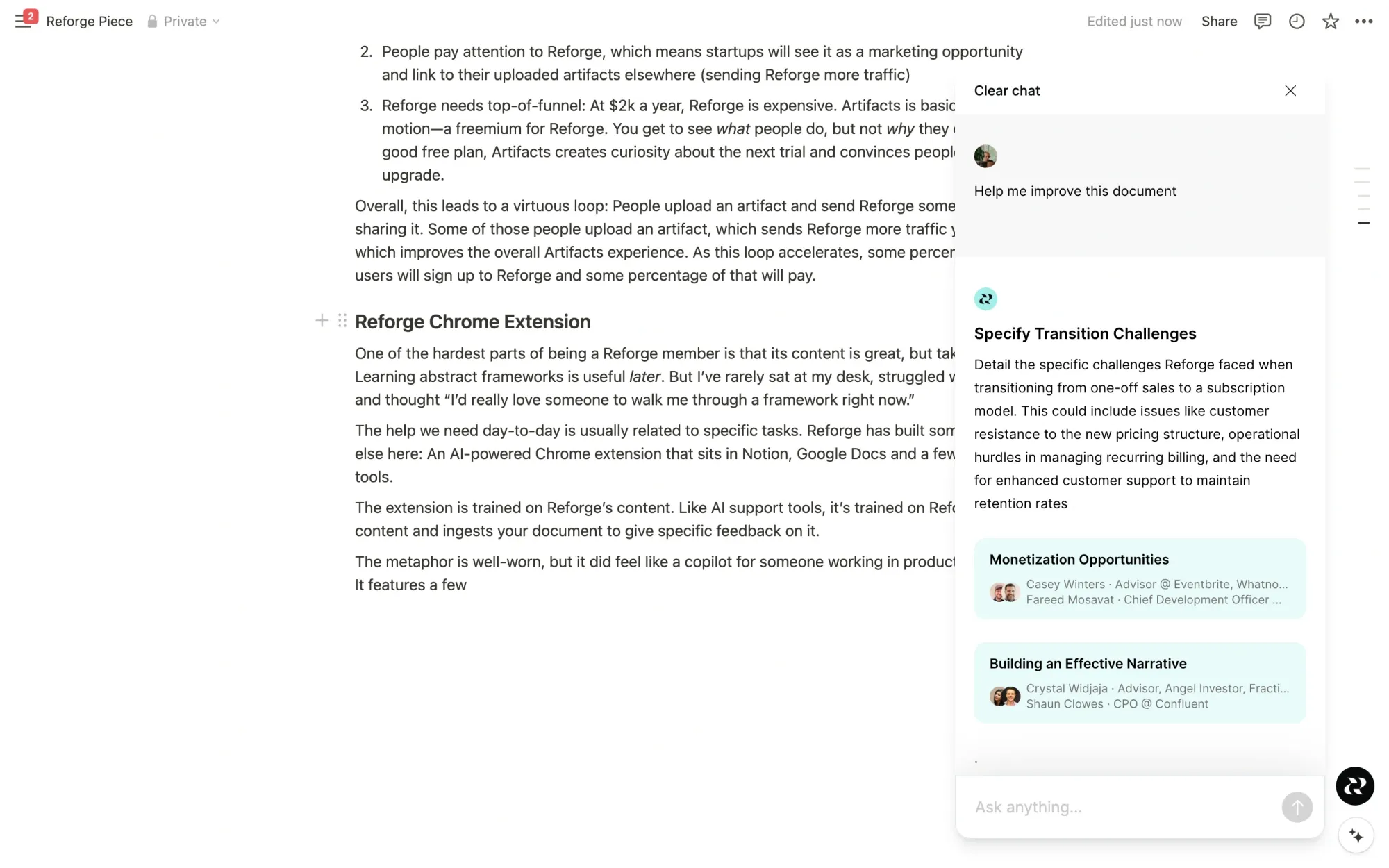
It gives specific (and good!) advice and recommends Reforge content that might help with this document.
The intent here is two-fold:
- To consume their content, I normally have to navigate to Reforge, find the right piece of content, consume it, and then apply it. Now Reforge can link me directly to the most relevant content.
- You usually use Reforge (aka consume their content) before you work. Now you can do it while you work. This means Reforge is more present throughout your workday, creating more perceived value.
This, again, hinges on Reforge being trusted: To use this, I need to trust that Reforge’s content is better than anything out there. Else a generic GPT4 would probably be good enough.
The future of Reforge
It’s hard to know what Reforge wants to be when it grows up. Raising $81m certainly doesn’t imply satisfaction with anything less than excellence.
After exploring 3 recent product additions (Artifacts, marketplace, extension), a theme emerges: They all hinge on trusting Reforge has the best content—because their courses, the extension and Artifacts are all built on that content.
Where does this go? Where will Reforge be in 5 years?
With the level of ambition required to raise $81m, I think Reforge might shoot for the moon and build an AI agent. If we evaluate agents like we do human workers, we’d obviously want the one with the best education. And since Reforge has that best education, they’ll win.
Their positioning has certainly already changed from their initial positioning around courses:

With third-party courses and Artifacts, Reforge is getting even more information from high-level practitioners. Trained on all of this information, Reforge could build the best product/growth agent out there.
Who wouldn’t hire someone with the best sum total knowledge of the best growth/product practitioners memorized perfectly?
